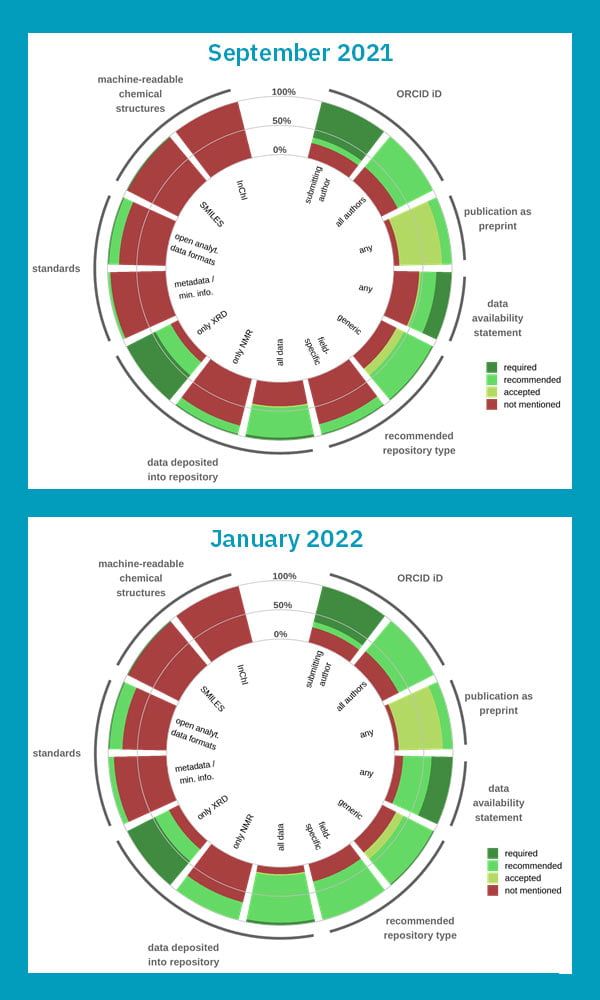As the primary method of communicating research results, journals have an enormous impact on data sharing practices in the scientific community. Ideally, journals and their publishers place recommendations or even requirements into their author guidelines and data policies.
As part of the activities around our Editors4Chem workshop series, Nicole Parks, Tillmann Fischer, and Claudia Blankenburg waded twice through the author guidelines and data policies of 42 journals in chemistry, released by 13 publishers. The goal was to check the requirements and recommendations in several categories regarding research data publication, open science practices, and machine-readable chemistry.
Details unspecified
While the majority of journals recommend publishing data in a research data repository, the how and where is not always specified. The majority of journals require authors to deposit crystallographic data into the Cambridge Structure Database (CSD), but there are no recommendations for other data types such as NMR. Machine-readable chemical structures (and we are not talking about drawings) are not mentioned in all but one of the guidelines. Recommendations on minimum information standards and metadata were rarely encountered. Nonetheless, the majority of journals recommend or even require a data availability statement and also provide pointers to authors on the concepts of generic and field-specific research data repositories.
Results
The survey shows that publishers and journals are starting to include aspects of research data sharing in their guidelines. Authors should accept and embrace the guidelines with increasing requirements for data availability, data interoperability, and re-usability to improve chemistry research, and not interpret these guidelines as a “minimum requirement to pass the bar”. Instead, these aspects are indicators of good scientific practice.
The study
The full study is published in Pure and Applied Chemistry (DOI: 10.1515/pac-2022-1001), and, of course, we’re putting our money where our mouth is: the data behind the survey and figures is available on RADAR4Chem (DOI: 10.22000/702). To help researchers to enact the recommendations, we have a growing number of guidance articles in the NFDI4Chem Knowledgebase.
